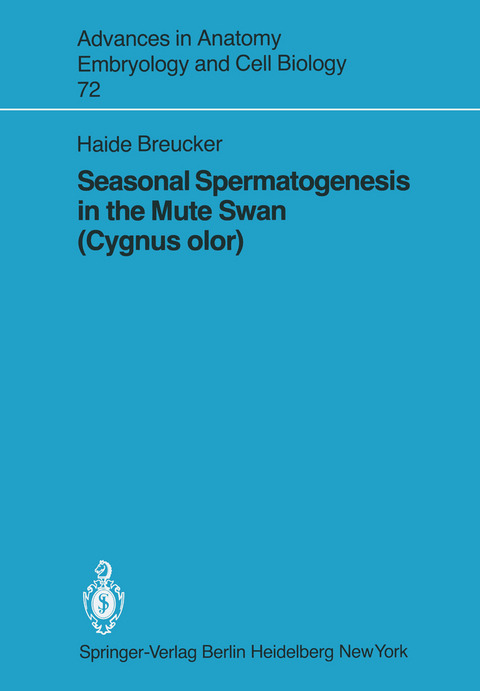
Seasonal Spermatogenesis in the Mute Swan (Cygnus olor)
Springer Berlin (Verlag)
978-3-540-11326-3 (ISBN)
1 Introduction.- 2 Literary Synopsis.- 2.1 Spermatozoa and Spermatogenesis in Birds.- 2.2 The Annual Cycle of Male Germ Cell Development.- 3 Material and Methods.- 4 Topography and Microscopic Anatomy of the Testes of the Swan.- 5 The Complete Process of Spermatogenesis.- 5.1 Stages of Spermatogenesis.- 5.2 Incomplete Formation of Stages.- 5.3 Stem Cell Renewal.- 5.4 Sertoli Cells.- 5.5 Discussion.- 6 The Ultrastructure of the Seminiferous Tubule.- 6.1 Spermatogonia.- 6.2 Primary Spermatocytes.- 6.3 Secondary Spermatocytes.- 6.4 The Differentiation of Spermatids.- 6.5 Sertoli Cells.- 6.6 Lamina Propria.- 6.7 Discussion.- 7 The Annual Cycle of the Male Gonads (Light Microscopic Studies).- 7.1 Phase 1: Multiplication Period.- 7.2 Phase 2: Complete Process of Spermatogenesis.- 7.3 Phase 3: Beginning of the Regression Period.- 7.4 Phase 4: Invasion of Macrophages.- 7.5 Phase 5: Winter Resting Period.- 7.6 Discussion.- 8 The Regression Period (Electron Microscopic Studies).- 8.1 Germ Cells.- 8.2 Sertoli Cells.- 8.3 Macrophages.- 8.4 Discussion.- 9 Summary.- References.
| Erscheint lt. Verlag | 1.3.1982 |
|---|---|
| Reihe/Serie | Advances in Anatomy, Embryology and Cell Biology |
| Zusatzinfo | VII, 94 p. 31 illus. |
| Verlagsort | Berlin |
| Sprache | englisch |
| Maße | 170 x 244 mm |
| Gewicht | 230 g |
| Themenwelt | Studium ► 1. Studienabschnitt (Vorklinik) ► Anatomie / Neuroanatomie |
| Schlagworte | Biology • Biorhythmus • Cell • Development • Höckerschwan • Macrophages • Migration • Morphology • Reproduction • Spermatogenese • Vertebrates |
| ISBN-10 | 3-540-11326-6 / 3540113266 |
| ISBN-13 | 978-3-540-11326-3 / 9783540113263 |
| Zustand | Neuware |
| Haben Sie eine Frage zum Produkt? |
aus dem Bereich


